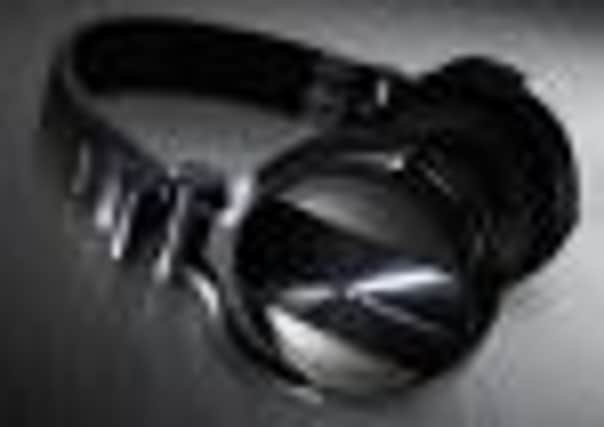Review: Pioneer HDJ 1500 Headphones


The first CDJ needed a few tweaks to feel more like vinyl and Pioneer, being the meticulous professionals they are, quickly ironed out the creases with the subsequent release of the deck. When the headphones were combined with the mixer, they were a deadly combo and every big-name DJ invested in a set.
I believe there is one rule of thumb for the aesthetics of electronics: if it looks like Darth Vader would have it strapped to his chest, then chances are it’s a serious piece of kit.
Advertisement
Hide AdAdvertisement
Hide AdPioneer’s current range of DJ headphones has been updated, and mirrors Lord Vader’s character development in three stages. The entry-level HDJ-500s are the ‘apprentice’ - full of optimism and potential, easily beating off numerous competitors, and priced at an affordable £90.
The HDJ-2000’s are the ultimate - the full Darth Vader of the group. They harness all the power of bass, with the mid-range and treble perfectly balanced with precision. There is a clinical delivery which has an almost psychic response to frequency, plus they look a tad scary. Scarier still is the price tag: they retail for £260.
The newest model, the mid-range HDJ-1500, retailing at £150, are somewhere in between boy and evil overlord. Launched as a replacement model for the long-serving industry standard HDJ-1000, the HDJ-1500 does far more however than bridge the gap between novice and expert. They are Darth Vader as a young man - Anakin Skywalker dressed in black leather, killing the occasional annoying alien for giggles and jumping head first to the dark side.
They come in two colours: silver – a nod to their predecessor, the 1000s or, my choice, the more evil-looking black. First impressions are everything, and packaged in a minimal black box, they look classy and understated. As I unboxed the headphones, I found a soft drawstring bag, detachable coiled cable (with the standard 6.3mm jack convertor for Pro connections) in addition to the HDJ-1500s themselves. There is a hard case option, which I would recommend - after all £150 isn’t cheap.
They are unmistakeably DJ headphones, solid in the hand with substantial weight. They are streamlined to be slimmer than most DJ cans, to appeal to a wider market. If shelling out £150 for a pair of headphones, you need to justify the price by being able to pair them with your MP3 player for the daily commute without them, or you, looking freakishly imposing.
Swivelling the cups on their hinges reveals metal with a smooth black rubberised material, and brushed metal vertical stripes with the embossed Pioneer logo feature on both cups. Any DJ enthusiast will note the vinyl-esque groove pattern of the metal, which makes them eye-catching from any angle.
The ear pads are made from real leather, which isn’t very soft but the tougher-grade hide will last longer. The headband has been lifted directly from the HDJ-2000 model – a black rubberised band with leather pad for comfort.
How headphones feel on your head is quite subjective, but I found them a perfect fit and weight. The ear cups fitted snugly without being too tight. I tested them in a club and they were still comfy after playing for an hour straight. There was plenty of room for flexibility when monitoring; they twisted 90 degrees and did a full 180 flip.
Advertisement
Hide AdAdvertisement
Hide AdWhich brings me on to the build quality: it’s superb. The detachable cable makes for a longer lifespan, and is easily replaced. The hinges are far more durable than the competition; several screws lock them in place and they look solid. Unlike my previous pair of DJ headphones, the SONY MDR-700s, which died after a shabby 13 months use, they look like they’ll last the pace.
But how do they sound? LOUD. Very loud. I tested them in a club with a Function One sound system. The overly-large ear cups and cushioned pads isolated the sound perfectly. The bass has a powerful thump and is responsive. The frequencies at the low end of the spectrum are exceedingly well-detailed and articulate - exactly what you need for electronic music. The mid-range is strong and offers a great deal of space to engage. The high end is lush; with no sign of sharpness, the higher frequencies glide like the gentle breath of an angel.
The 1500s actually give the 2000s a run for their money. They tick every box and I would happily recommend them to any DJ or enthusiast. For those who have been looking in the sub-£100 category and spied the flashy HDJ-500s, take my advice and save up for the HDJ-1500s; they are far superior. In the words of old Darthy boy: “The force is strong with this one.”
For: Loud drivers, good isolation, strong and durable.
Against: They were not hand-delivered by a scantily clad supermodel, nor was there a winning lottery ticket in the box. Shame on you Pioneer.
Rating: 9/10